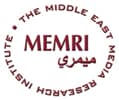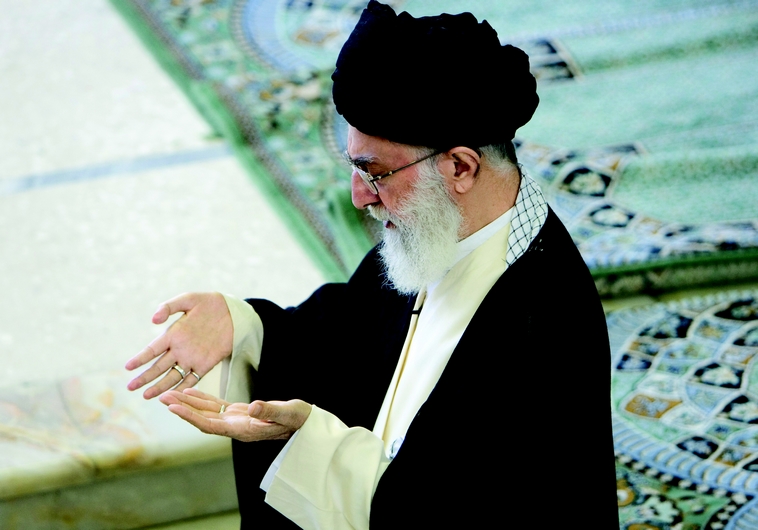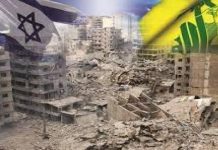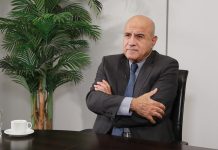
Khamenei’s ‘Red Lines’ Speech
At a meeting of regime officials marking Ramadan, and a week before the June 30, 2015 deadline for a nuclear deal, Iranian Supreme Leader Ali Khamenei explained in detail the red lines and conditions that Iran would demand in order for an agreement to be reached. Khamenei reiterated yet again that there would be no inspection of Iran’s military installations or questioning of scientists, that nuclear research and development would continue throughout the duration of the agreement, that the sanctions on Iran would be lifted simultaneously with the signing of the agreement and not after the IAEA confirms that Iran has met its obligations under the agreement, and that the agreement duration proposed by the Americans is unacceptable to Iran (for a detailed list of Iran’s red lines as tweeted on June 24, 2015 by Khamenei’s office, see Appendix).[1]
Also at the meeting, Khamenei laid out the sequence of events that had led to the negotiations with the Americans, saying that it began with President Obama’s 2009 proposal to him during the presidency of Mahmoud Ahmadinejad, and not after President Hassan Rohani took office in 2013, as the U.S. administration claims. He said that President Obama had promised to lift the sanctions within six months and to recognize Iran as a nuclear power.
Negotiating with the Americans, Khamenei said, had further solidified his understanding that they never keep their word, and that their entire aim is to destroy Iran’s nuclear industry. He added that his position on Iran’s red lines has been expressed to the Iranian nation publicly and also to the Iranian negotiating team in private conversations; this explanation was likely in response to American officials’ claims that Khamenei’s anti-U.S. and anti-nuclear deal statements were purely for domestic purposes. Khamenei also clearly expressed his support for the Iranian negotiators, and called the U.S. the common enemy of all Iranian factions from both the ideological and pragmatic camps.
Khamenei began his speech with an explanation of his political and economic worldview and his vision for Iran’s status in the world. Again presenting his model of a “resistance economy,” which he said is a culture, as the only one that could promote Iran politically, culturally, and economically vis-à-vis the West. The main thrust of this model, he said, was that the national infrastructure must be properly utilized by the internal forces of Iranian society – that is, educated young people and scientists – and that this must be attained through religious piety and faith, determination, and strict adherence to the principles of the regime of the Islamic Revolution. This contrasts with the economic model promoting foreign investment, privatization, and the boosting of the private sector, which is championed by pragmatic camp leaders Hashemi Rafsanjani and President Hassan Rohani. Rejecting the cultural and economic orientation towards Europe and the West – which he termed “the easier path” – Khamenei urged regime heads and apparatuses to convey regime values to the public, especially the younger generation; this, he said, was the difficult but correct path to achievement.
The following is Khamenei’s June 23, 2015 speech; the Appendix includes the official list of Iran’s red lines for a comprehensive nuclear agreement as tweeted on June 24, 2015 by Khamenei’s office:
“Resistance Economy” – A Model To Move Iran Towards Significant Economic Achievements
“Society’s religious piety in economic issues is the same ‘resistance economy’ that protects the country from upheavals stemming from international events or from the poisoned arrows of the international policy that opposes [the Iranian regime]. In recent years, I have reiterated the need to strengthen the country in light of the [Western] forces’ economic takeoff. During these years, [regime] officials have exerted commendable efforts, in accordance with their capabilities; however, all capabilities and potential in the country must be utilized in order to promote and actualize the resistance economy.
“The resistance economy model has been implemented in other countries, and has impacted them positively. At the center of the resistance economy is introspection. This internal focus does not mean aspiring to insularity, but reliance on domestic capabilities and potential by means of looking outward. The creation of the resistance economy was a product of collective wisdom and lengthy consultation. Many economists supported it after it was declared, and at this point the resistance economy has already become part of the country’s ongoing rhetoric and economic culture.
“This model of resistance economy is pitted against the old model, which was dictated by the superpowers to third world countries… Some might say that the resistance economy model is desirable but not viable. But I say clearly that implementing this model in the country’s current situation, taking into account the potential that exists, is absolutely possible.
“One of the blessings of the Revolution is the existence of young educated forces in the country – as long as a mistaken policy [i.e. population control] does not bring [in its wake] an aging society and a decline in these young forces.
“Today there are 10 million university graduates, and over four million students – 25 times more than at the start of the Revolution. This number of young, educated, expert forces is the pride of the Islamic regime [and it embodies] a very great opportunity.
“According to international statistics, the Islamic Republic of Iran’s economy ranks 20th worldwide. If we utilize our unrealized potential, we can climb to 12th. Iran is first in the field of oil and gas reserves. Its unique geographic location connects North with South and East with West. Its 15 neighbors, with a total population of 370 million, constitute an open-air market that is very close by, in addition to the large-scale domestic market of over 70 million in Iran. This is additional potential, and if we pay attention to this domestic market, the manufacturing situation will change.
“There is further potential in the country’s basic infrastructure of energy, transportation, communications, reactors, and dams, and also in the cumulative administrative experience in the country. We must use this potential properly and correctly, because Iran’s problem is not a lack of the right plans or the right declarations and expertise. The main problem, which is widespread even among the elites, is the improper use of the right plans and declarations.
“Some problems stem from domestic challenges. Iran’s greatest challenge is negligence in implementation and a shallow, superficial view of the problems. Philosophical discussions are not going to move this matter forward; there is a need for movement and for long-term measures to solve the problems.
“It may be that large-scale projects will take a generation to succeed. When there was talk of a scientific movement at Iranian universities, maybe [at that time] no one believed that 10 or 15 years later the country’s scientific movement would reach its current situation, by virtue of the efforts of the talented professors and young people. Today, in contrast to those years, we are witness to significant progress, and even, in several fields, astounding progress.
“Sometimes it is possible to provide some goods and services via two paths: The first, easier one is through Europe; and the second, more difficult one is not through Europe [but is through relying on ourselves]. The first path would distress anyone, enfeebling his friends and strengthening his enemies.
“Another domestic challenge stems from the gravest and most fundamental mistake of all: There are those who think that all roads will open [to Iran] after we distance ourselves from the foundations of our faith and the principles of the Islamic regime. It is the government officials who believe in the foundations and principles of the Revolution – I have no complaints to address to them. But in the group of those involved [in the issue], there are some who believe that abandoning principles will open gates. However, in recent years, we have already seen the results of this grave mistake, in several countries. The only way forward is to stand fast and to insist on the foundations and principles.
“Yet another domestic challenge is the belief of some that the people cannot tolerate the problems [any longer]. If the truth is explained to the people, with the necessary sincerity and in the proper way, the people will stand fast and show resistance. Another challenge is having doubts about the country’s domestic capabilities. We must have confidence in our young scientists and in the people in economic matters, and must utilize their capabilities.
“Determination, refraining from sloppiness and from seeking convenience, and reliance on jihad-oriented management are the main conditions for actualizing the resistance economy. Jihad-oriented management is achieved through reliance on God and on using wisdom and logic, while firmly promoting matters without fear of foreigners.
“All media, officials, and Friday preachers, and those whose statements influence the people, are duty-bound to spread the culture of the resistance economy. In order to implement the policy of the resistance economy, it is essential to be frugal, to prefer local products, particularly in the government apparatuses, to determinedly fight against unreasonable importation and smuggling, to pay special attention to [nurturing] small and medium manufacturing plants, and to reexamine monetary policy and banking arrangements. Empathy, consensus, and internal unity are the main conditions for implementing all this. Everyone must assist the government and the officials. Engaging in marginal matters, on the part of any faction, is unacceptable, and must be avoided. We can carry out great work on the economic front and we can get past this sensitive phase.”
Obama Offered To Resolve The Nuclear Issue By Recognizing Iran As A Nuclear Power
“Whatever I say at public meetings is exactly what I say in private sessions with the [Iranian] president and with other relevant officials. That is why it is a lie to say that in private meetings [I] disregard several official red lines.
“The negotiating team puts forth efforts in a large number of issues and data [provided by] the opposite side, while showing national pride, absolute accuracy, and the intent to solve the problems and promote the country, and expresses its opinions fairly and courageously. Anyone who is up to date on the details of the negotiations will acknowledge everything that is said about the negotiating team. Obviously, it is possible for them [the team]to make a mistake in identifying [problems] and in its actions, but they are pious and zealous people.
“I do not object to criticism. I see it as necessary and helpful. The truth is that it is easier to criticize than to act… My words should not prevent the continuing criticism [by the ideological circles of the negotiating team], but we must note that the negotiating team is aware of several issues that are subject to criticism. However, for some [of these issues], necessity is pushing it [i.e. the negotiating team to go] several steps [farther].
“The issue of negotiating with the Americans is linked to the era of the previous government [i.e. president Mahmoud Ahmadinejad], and to the dispatching to Tehran of a broker to ask for negotiations. At that time, I received a visit from a distinguished individual from the region acting as mediator [i.e. Sultan Qaboos of Oman] who said specifically that the U.S. president [Obama] had asked him to come to Tehran and present the American request for talks. The Americans told this mediator: ‘We want to resolve the nuclear issue and lift sanctions within six months, while recognizing Iran as a nuclear power.’ I told this mediator that I did not trust the Americans and their words, but I agreed, on his insistence, to reexamine this issue, and the negotiations began.
“In any diplomatic match, there are two arenas worth noting. The main arena is that of reality, action, and creating assets. The diplomatic and policy arena is the [second] arena where the assets are transformed into advantages and into what secures national interests. Being empty-handed in this first arena will make any country less flexible in the second arena According to this logic, Iran entered into the talks with strong and important achievements, one of which was the ability to produce nuclear fuel [enriched to] 20%. All the nuclear powers refused to sell Iran fuel enriched to this level for nuclear medicine at the Tehran reactor, and even prevented other countries from doing so. But Iran’s young scientists, in whom we take pride, manufactured it and formed it into fuel rods, and the opposing side was checkmated.
“In addition to nuclear fuel [enriched to] 20%, Iran had other significant achievements. In essence, Iran’s strategy of steadfastness under pressure bore fruit, and the Americans realized that the sanctions were not achieving their desired result and that they must find another way.
“Iran has a skeptical view of the Americans. Nevertheless, I agreed that if the Americans stood behind their words and their obligations [as conveyed] by this broker from the region, then we would also pay a price, because in negotiations, one can backtrack on the basis of wisdom and calculations. However, shortly after the negotiations [began], they [the Americans] began showing their greed and violating their obligations.
“A good agreement for Iran is one that is just and fair. During the negotiations, the Americans changed their promise [on when they would] lift the sanctions, from six months to one year, and later, due to their recurring greed, they stretched out the negotiations, and even threatened to intensify the sanctions, and spoke of militarization and [implementing the options both] on the table and under the table.
“A look at the Americans’ demands shows that their goal is to uproot Iran’s nuclear industry, destroy Iran’s nuclear essence, and turn Iran into a caricature, a [mere] symbol with no substance. Iran has a genuine, proven need for 20,000 megawatts of nuclear power. They [the Americans] intend to keep pressuring Iran in some way and to maintain the sanctions, while attempting to destroy [Iran’s] nuclear industry and deny Iranians the many benefits of this industry. If they succeed in attaining their goals in the negotiations, it will be a major victory for them, because they will have vanquished the independence-loving Iranian nation, and defeated a country that can be a role model for other countries. All their violations of their obligations and their haggling are aimed at attaining these goals.
“From the beginning of the negotiations until today, Iran has made reasonable demands. We said that we wanted the sanctions lifted and that in return we were willing to give some things, as long as our nuclear industry does not stop and does not suffer a blow.”
Iran’s Red Lines
“In contrast to what the Americans are insisting on, we do not accept long-term restrictions for 10 to 12 years. We have told them how many years we are willing to accept restrictions for.
“[Iran’s] research, development, and construction will continue, even during the restrictions. They say ‘don’t do anything for 12 years,’ but these are particularly violent words, and a gross mistake.
“The economic, financial and banking sanctions – whether related to the [UN] Security Council or to the American Congress and administration – must be lifted immediately with the signing of the agreement. The remainder of the sanctions will also be lifted within a reasonable timeframe. The Americans are presenting a complex, convoluted, bizarre, and stupefying formula for [removing the] sanctions, and it is unclear what will emerge from it, but we are clearly stating our demands.
“The lifting of the sanctions must not depend on Iran carrying out its obligations. Don’t say, ‘You carry out your obligations and then the IAEA will approve the lifting of the sanctions.’ We vehemently reject this. The lifting of the sanctions must take place simultaneously with Iran’s meeting of its obligations. We oppose the delay of the implementation of the opposite side’s obligations until the [release of] the IAEA report [verifying that Iran has met its obligations], because the IAEA has proven repeatedly that it is neither independent nor fair, and therefore we are pessimistic regarding it.
“They say, ‘The IAEA should receive guarantees [on the nature of Iran’s nuclear program].’ What an unreasonable statement[!] They will be secure only if they inspect every inch of Iran. We vehemently reject special inspections [that are not customary for any country except Iran], questioning of Iranian personnel, and inspection of military facilities.
“Everyone in Iran – including myself, the government, the Majlis, the judiciary, the security apparatuses, and the military, and all [regime] institutions – want a good nuclear agreement, an agreement that is dignified and fair, and that is in accordance with Iran’s interests.
“Although we wish the sanctions lifted, we see them as [having brought us] a particular kind of opportunity, because they made us pay more attention to domestic forces and domestic potential.”[2]
Appendix: List Of Iran’s Red Lines As Tweeted By Khamenei’s Office
On June 24, 2015, Khamenei’s office tweeted a list of Iran’s red lines for a comprehensive nuclear agreement:[3]
Endnotes:
[1] See MEMRI Inquiry & Analysis Series Report No. 1167, Nuclear Negotiations At An Impasse: Leader Khamenei Rejects Agreement Reached On Token Inspection Of Military Sites And Questioning Of Scientists; U.S. Willing To Close IAEA Dossier On Iranian PMD, To Settle For Inspecting Declared Nuclear Sites Only, And To Rely On Intelligence; EU Objects, June 11, 2015; and Inquiry & Analysis Series Report No. 1171, U.S. Secretary Of State Kerry: ‘We Have Absolute Knowledge’ About ‘Certain Military Activities’ The Iranians ‘Were Engaged In’; Iran Rejects Outright U.S. Terms For Future Inspection – For Example, Inspection Of Military Sites, June 24, 2015.






















